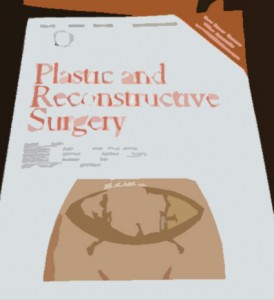Journal time.
This month’s issue May 2012 of Plastic and Reconstructive Surgery Journal had a study out of NY, “The Use of Acellular dermal Matrix in Immediate Two Stage Tissue Expander Breast Reconstruction.”
The nitty gritty?
- Acellular Dermal Matrix (ADM) is used in many implant based breast cancer reconstructions. Brand names for ADM are things like Alloderm and Strattice.
- Why is it used? It helps give support and thickness to the tissue, which is helpful in many mastectomy cases where the coverage over the underlying tissue expander and implant is poor.

Study:
Retrospective analysis of 628 consecutive immediate two stage tissue expander breast reconstructions at a single institution over a 3 year period. Two groups were obtained: those with ADM used, and those without.
Results:
- 70% used ADM, 30% did not
- groups had similar patient characteristics.
- Major complications were significantly increased in the ADM group 15% vs. 5%
- Complications: infection requiring IV antibiotics, flap necrosis requiring excision, and explantation of the tissue expander.
Conclusion?
ADM is associated with higher major complications and should only be used for specific patients. They thought the groups which benefitted best were single stage permanent implant reconstrution or inadequate local muscle coverage of the tissue expander.
I think this is a good study, in that all patients were offered ADM (so it isn’t biased by the surgeon), and it was a large study. In the article following the study, the reviewer brought up a few good points, including a question– Was the intraoperative tissue expander inflation higher in the ADM group? (This could lead to poorer blood supply, which in turn could lead to infections, flap loss, and explants.) They also brought up most implant tissue expander reconstructions have poor muscle coverage of the lower pole, so with the criteria this study proposes, most people would still qualify for ADM.
Interesting points. The study still shows with large numbers higher complications with ADM. In their study, they found a correlation of problems with larger surface area of the ADM. They hypothesize the larger surface has a harder time revascularizing, and perhaps this leads to the more frequent complications.
